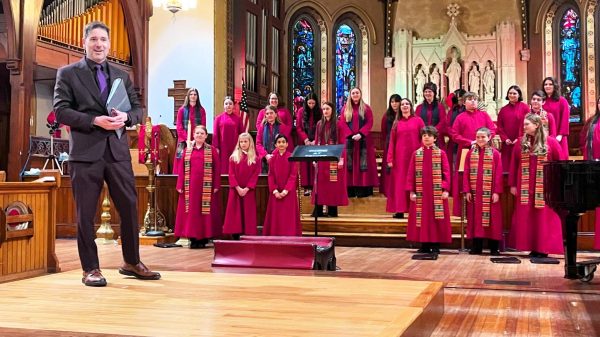KENT—The Inland Wetlands Commission has considered two issues that were more than a decade in the making.

The first, discussed in executive session at the Oct. 27 meeting, concerned a log road through a wetland that leads to a boat dock on North Spectacle Lake and the second with the current construction of a pond on Upper Kent Hollow that was first approved in 2014.
The first issue, now in litigation, stems from a March denial by the IWC of an after-the-fact application from KenMont/KenWood, LLC, for the road and boat launch, both built without permits on a 63-acre parcel off Kenmont Road.
An appeal of the decision was filed within 15 days of the denial.
The corporation is represented by attorney Neil Marcus of Danbury. Michael Zizka represents the town.
Land Use Officer Tai Kern said the parcel is not part of KenMont and KenWood, the twin camps for boys and girls started a century ago by the late Lloyd Albin and sold decades ago.
The lakefront property in question is now owned by Albin’s estate under the name KenMont/KenWood, LLC. David Albin is the administrator of the estate.
“It’s very confusing,” Kern said. “People think it is the camps.”
Last spring, Kern reported that the estate discovered an 1,800-foot-long log road through the wetlands leading to the boat dock on North Spectacle Lake during pre-sale reviews.
Kern investigated the issue using Google Earth and determined that the pathway was begun around 2012. Later perusal by commission members showed the progress of construction through to 2018 when the last map was available. By 2020, it had reached the water, but it is unclear when the dock, which sits on wood poles sunk into the lake bed, was created.
The corporation was represented in its March application for the after-the-fact permit by attorney Michael Sconyers who said his clients were “chagrined” by the discovery of the path and dock. “It was a surprise to a number of us that the dock was even there,” he said.
IWC Chairman Lynn Werner remarked at that time that the commission would never have approved the road or dock and that the commission’s options were to have it all removed or to approve it as is.
The commission moved to have the dock removed and let “nature take its course” with the log road.
In September, Kern reported to the commission that Marcus, who now represents KenMont/KenWood, had asked to “chat” with members in executive session.
In considering his request, commission members asserted that they had made the right decision in denying the application and that a notice of violation should be issued because no remediation has taken place. A meeting was arranged, nevertheless.
No action was taken after the executive session.
The issue concerning the farm pond grew out of the length of time between the 2014 exemption granted for the pond on the Scott Mackesy property on Upper Kent Hollow Road and the start of construction this year.
At the time the exemption was granted for agricultural purposes, Mackesy proposed a 0.1-acre pond to water cattle.
The initial application showed that just under a half-acre of regulated area would be disturbed in the process.
There was no movement on the project until this year.
“It’s been an awfully long time,” said Kern, who added that she reached out to other land use agents to see if there is a time limit on such an exemption.
“You didn’t set a limit when you approved it and there really is nothing in the regulations to limit when you start an agricultural project,” she said.
IWC member Paul Yagid asked if the landowner has been able to apply for reduced agricultural land use taxes for more than a decade because of the exemption. Kern said that was a separate issue and did not affect the IWC’s deliberations.
Yagid referred to an email from Mackesy to Kern that said the pond should be finished in 2025 and that cattle will then be contained in the pasture.
“Can we hold them to what they said, that there will be cattle in 2025?” he asked.
While there was no consensus about the ability to retroactively enforce a deadline, Werner said, “We have been more than reasonable, and it would be consistent. In the future, we will set limits.”
Other types of land use approvals have time frames in which the work must be done.





























